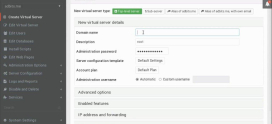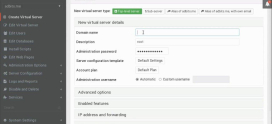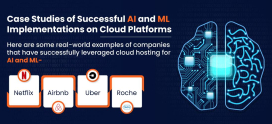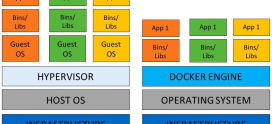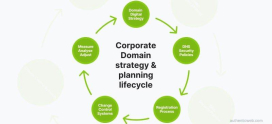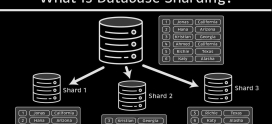
Best Practices for Hybrid Cloud Server Setups
In today’s fast-paced digital world, businesses and individuals alike are constantly seeking ways to optimize their IT environments. If you’ve ever felt overwhelmed by the myriad of cloud services out there, you’re not alone. With so many options and configurations, how do you even begin to set up a hybrid cloud server that meets your unique needs? Just like assembling a jigsaw puzzle, it can feel frustrating if you’re not sure where the pieces fit. However, the good news is: achieving that seamless integration doesn’t have to be a daunting task. This guide will help you navigate the setup of a hybrid cloud server by exploring best practices, empowering you with confidence every step of the way.
Hybrid cloud environments offer flexibility and scalability, but they can also introduce complexities that may leave you feeling anxious. What’s the perfect balance between your public and private cloud resources? How can you ensure security while making your data accessible? With the right strategies in place, you can turn this intimidating challenge into an opportunity for innovation. Let’s explore practical tips that can demystify hybrid cloud server setups, helping you create an efficient and secure system tailored to your needs.
Understanding Hybrid Cloud Environments
Before diving into best practices, it’s essential to clarify what a hybrid cloud environment entails. Simply put, a hybrid cloud combines private cloud infrastructure, which is dedicated to a single organization, with public cloud services, allowing for data and applications to be shared between them.
This setup enables businesses to take advantage of the scalability of public cloud resources while maintaining control over sensitive data in their private cloud. Think of it as running a restaurant where you can cook at home (private cloud) while still having the option to offer takeout from a popular local diner (public cloud).
Assessing Your Needs
Before setting up anything, you must take the time to evaluate your organization’s specific requirements. What are your data storage needs, and what compliance regulations do you need to follow? Make sure to ask these critical questions:
- What types of applications will you run in the hybrid cloud?
- How much control do you require over your data?
- What is your budget for ongoing maintenance?
By understanding these needs, you can better decide how to configure your hybrid cloud setup for optimal performance.
Choosing the Right Cloud Provider
Choosing a reputable cloud provider is crucial for the success of your hybrid cloud environment. With so many options, how do you decide which one fits your needs best? Factors to consider include:
- Customer Support: Ensure they provide robust support to handle any issues that arise.
- Security Features: Look for proven security measures in place to protect your sensitive information.
- Integration Capabilities: The hybrid cloud provider should seamlessly integrate with your existing systems.
Consider comparing providers like DarazHost with others based on these key features, ensuring you make a well-informed choice.
Implementing Strong Security Measures
Security should always be a top priority in any IT setup, especially in hybrid cloud environments where data moves between public and private platforms. Here are some best practices:
- Data Encryption: Always encrypt your data both at rest and in transit.
- Access Control: Implement strict access controls to ensure only authorized users can access sensitive data.
- Regular Audits: Conduct regular security audits and vulnerability assessments.
Just like locking your doors and windows at home, taking these precautions can guard against potential threats.
Managing Data Migration Effectively
Data migration can be a cumbersome task when setting up a hybrid cloud. You can streamline this process by:
- Planning the Migration: Create a detailed migration plan that outlines timelines and responsibilities.
- Testing Before Full Migration: Ensure you run tests in a controlled environment to identify potential issues before full-scale migration.
- Documenting Everything: Keep a detailed record of your migration process for future reference.
Having a clear plan can help reduce stress and ensure a smooth transition, much like following a recipe while cooking.
Monitoring and Management
Once your hybrid cloud is up and running, ongoing monitoring is essential. You can use various tools to keep tabs on performance, security, and costs. Key areas to focus on include:
- Performance Metrics: Track response times and application performance.
- Billing and Cost Management: Monitor your usage continuously to avoid unexpected charges.
- Data Compliance: Ensure ongoing adherence to relevant compliance regulations.
Think of this ongoing assessment as a weigh-in at the gym—it’s how you ensure you’re on track to meet your goals.
Creating a Disaster Recovery Plan
A disaster recovery plan is critical to ensuring business continuity in the event of an incident. Here are essential steps to take:
- Identify Critical Data: Determine which data is essential for operations and prioritize its recovery.
- Backup Regularly: Implement regular backups in both environments to ensure data redundancy.
- Test Your Plan: Simulate disaster scenarios to ensure your plan is effective.
A disaster recovery plan acts like an insurance policy—something that you might not think about every day but is invaluable when the unexpected occurs.
Staff Training and Awareness
Your employees play a critical role in the success of your hybrid cloud environment. Providing ongoing training and creating awareness about best practices ensures everyone understands their part in maintaining security and effectiveness. Consider:
- Regular Workshops: Hold workshops to teach employees about cloud capabilities and security measures.
- Communication Protocols: Establish clear communication protocols for reporting issues.
- Encouraging a Cloud Culture: Foster a culture that embraces learning about cloud technologies.
Every member of the team is like a cog in a machine; if one isn’t functioning well, it affects the entire setup.
FAQs
What is a hybrid cloud server?
A hybrid cloud server refers to a computing environment that combines both private and public cloud services, allowing for a flexible setup depending on business needs.
What are the advantages of a hybrid cloud setup?
Hybrid cloud setups offer scalability, improved security for sensitive data, and cost efficiency by allowing businesses to pay for what they use.
How secure is a hybrid cloud?
While hybrid clouds can be secure, it is crucial to implement strong security measures such as data encryption, access controls, and regular audits to protect against vulnerabilities.
How do I choose the best cloud provider for my hybrid cloud server?
Look for key features such as customer support, security measures, and integration capabilities to ensure the cloud provider meets your specific needs.
What steps should I take for data migration to the hybrid cloud?
Conduct a detailed migration process that includes careful planning, testing in a controlled environment, and detailed documentation to ensure a smooth transition.
Why is staff training important for hybrid cloud environments?
Staff training is essential to ensure team members are well-informed and can adhere to security protocols and best practices, helping to maintain the effectiveness of the system.In a world where businesses are increasingly relying on technology to operate efficiently, navigating the complexities of hybrid cloud server setups is vital. Understanding the integration of both public and private cloud services can dramatically affect a company’s ability to scale, ensure security, and maintain control over sensitive data. As we wrap up this guide, remember that while the process may appear overwhelming at first, gradually implementing the strategies outlined will lead to a successful hybrid cloud environment tailored to your unique business needs.
By proactively assessing your organization’s requirements, choosing the right providers, and prioritizing security and training, you create a strong foundation for your hybrid cloud strategy. Embrace the challenge as an opportunity to innovate and improve your IT infrastructure. With diligence and the right tools, the seamless integration of cloud services can become a significant asset for your organization.


